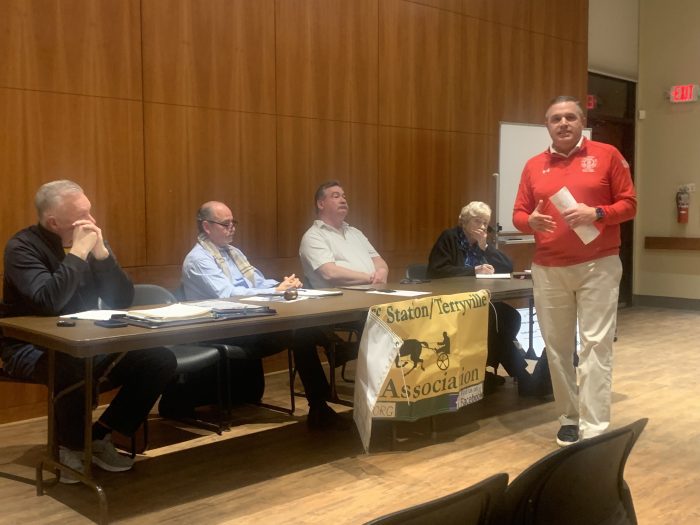By Sabrina Artusa
At the Feb. 25 Port Jefferson Station/Terryville Civic Association meeting, the many services of the Town of Brookhaven Clerk’s Office were reviewed and various developments were discussed, including the Baylis Avenue site proposal and Jefferson Plaza.
The association established their position on the proposed annexation of the 5.6-acre site on Baylis Avenue by the Village of Port Jefferson. Northwind Group, after their rezoning proposal was shot down by Brookhaven, preventing their plans for an apartment complex on the parcel, moved to transfer ownership of the land to the Village of Port Jefferson.
“I would really like to reiterate that it is my objection…this is a thinly veiled backdoor move to get approval he otherwise wouldn’t have gotten,” Port Jefferson Station/Terryville Civic President Ira Costell said. The rest of the board, as well as civic members, seemed in agreement.
March 6, Northwind Group will appeal the ruling to the Town of Brookhaven council and a public hearing will be held. The annexation would set a “bad precedent,” said civic member Charlie McAteer.
Newly elected Port Jefferson Station/Terryville Civic Vice President Lee Brett lamented how the annexation would complicate the execution of services by putting a burden on the Terryville Fire Department and the Comsewogue School District. “Just because it says Port Jefferson Village and they get to go to the beach for free, I can care less, I want my town safe,” he said.
Brookhaven Town Clerk Kevin LaValle reviewed his department’s services and processes, including administering marriage licenses, disability parking passes, death certificates and record digitalization.
He has also worked to use technology to his advantage, now sending people notices of renewals and allowing them to complete the form from home.
“The most valuable thing in business is time, from the minute your client asks you for a service from the minute you get it done…we want to be a township that makes it easier for people to come in and do business with our township,” he said, adding that developers can now submit land-use applications online. Further, project information is now advertised through signs that have QR codes leading to the town website.
“It makes it a lot easier to get information on a project out there,” LaValle said.
LaValle also discussed the prevalence of text message and phone call scams, sometimes under the guise of a bank or a police department saying a loved one is in jail.
LaValle got a scam himself in the form of a text. Presumably, it was his bank informing him of fraud. “I didn’t click the link they had there, I didn’t use the phone number they had on it. I went online…I called the number online that I know is the actual credit card company…they said absolutely that is not [us], can you send us the information,” LaValle said.
“Don’t rush making decisions,” said LaValle, who attended a presentation on the subject by the Suffolk County district attorney.
Next month, Staller Associates will meet with the civic to discuss architectural design for their development of Jefferson Plaza.
For more information on the services provided by the town clerk visit www.brookhavenny.gov.








